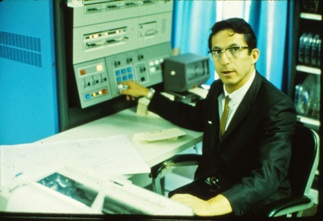


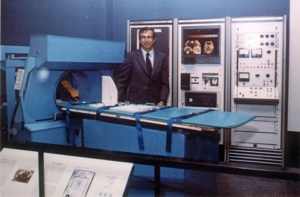
Professor of Physiology and Biophysics and Professor of Radiology at Georgetown University School of Medicine. In 1959 he published two very influential papers, Reasoning Foundations of Medical Diagnosis (with Lee Lusted) and Digital Electronic Computers in Biomedical Science. Dr. Ledley established the National Biomedical Research Foundation in 1960, invented a film-to-digital scanner (FIDAC) for chromosome research in 1965, and the full-body CT scanner in 1975. Worked in his career as a computer programmer, biochemist, physicist, operations research analyst, electronics engineer, radiologist, biophysicist... and dentist. He was inducted into the National Inventor’s Hall of Fame in 1990.
Sources: examiner.com, GMU, JAMIA
Dr. Ledley with one of the early ACTA (full-body CT scanner) at the Smithsonian Institution
(Source: examiner.com)
Dr. Ledley receiving the National Medal of Technology in 1997
(Source: George Mason University)
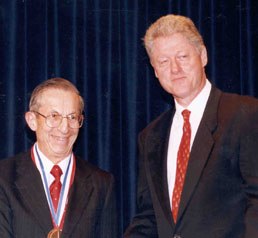

Dr. Ledley with the first FIDAC in 2007
(Source: Wikipedia)
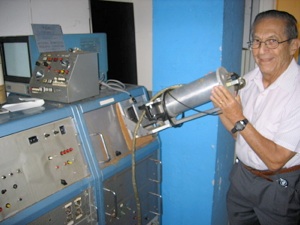
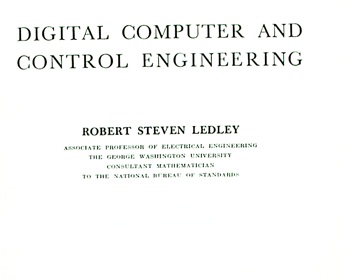
Cover page from Dr. Ledley’s 1960 book on digital control and feedback systems.
(Source: Rutgers University Library)

(above) Description of control and feedback system and (below right) a description of computer internals from Dr. Ledley’s 1960 Digital Computer and Control Engineering.
(Source: Rutgers University Library)

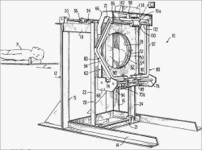
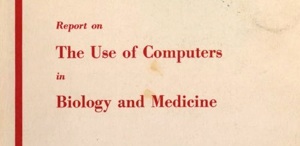
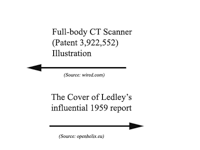
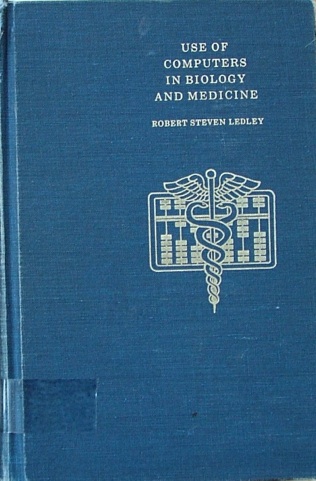
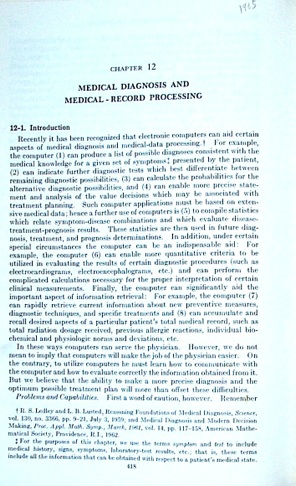

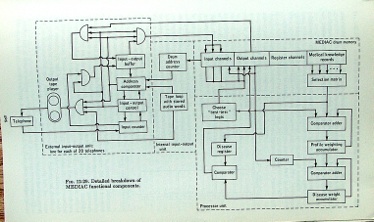
Cover and sample pages from Dr. Ledley’s 1965 Use of Computers in Biology and Medicine.
(Source: Rutgers University Library)
Left: Dr. Ledley at about the time of the publishing of Use of Computers in Biology and Medicine, posing with an IBM-360, the fastest general-purpose computer of the day. Note the (paper) console in front of him, the punchcards under his right elbow, and for some reason, the timeclock to his right.
(Source: Fred Ledley via WIkipedia)
